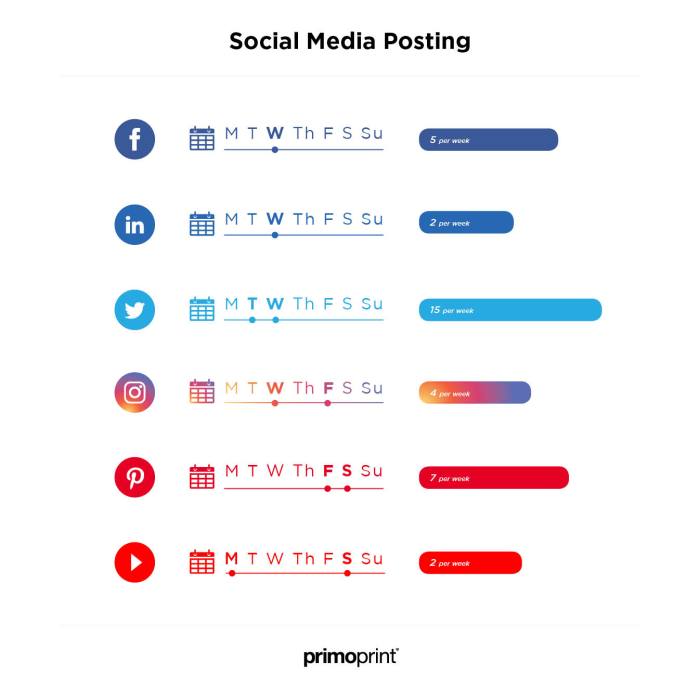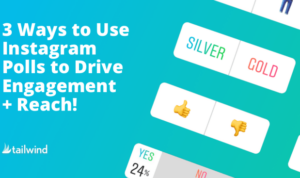Best Times to Post on Social Media is crucial for reaching your audience effectively. Imagine hitting the right time with your posts like nailing the perfect shot in a basketball game – it’s all about timing and strategy. Let’s dive into the ins and outs of this social media game changer.
From understanding peak engagement times to analyzing platform-specific data, we’ll explore the factors that influence the best times to post on social media. So, grab your virtual playbook and get ready to score big with your content.
Factors Influencing Best Times to Post on Social Media

When it comes to determining the best times to post on social media, there are several key factors that can influence the effectiveness of your content strategy.
Different Platforms Have Varying Peak Engagement Times:
Each social media platform has its own unique audience behavior, which directly affects the peak engagement times. For example, Instagram tends to see higher activity during lunchtime and in the evenings, while Twitter sees spikes in engagement during weekdays and around lunch hours. Understanding these platform-specific trends can help you optimize your posting schedule for maximum reach and impact.
Audience Demographics Impact Best Posting Times:
The demographics of your target audience play a crucial role in determining the best times to post on social media. For instance, if your audience consists mainly of working professionals, you may find that posting during weekday evenings or weekends garners higher engagement. On the other hand, if you are targeting students, posting during the afternoon or evening hours might be more effective. By analyzing your audience demographics, you can tailor your posting schedule to align with their online behavior patterns.
Type of Content Being Shared Influences Posting Times:
The type of content you are sharing also plays a significant role in determining the best times to post on social media. For example, if you are sharing visually appealing content such as images or videos, you may find that posting during peak evening hours when users are more relaxed and receptive to visual stimuli can lead to higher engagement. On the other hand, if you are sharing informative or educational content, posting during weekdays when users are looking for valuable information may be more effective. Understanding the nature of your content can help you strategize the optimal posting times for maximum impact.
Analyzing Platform-Specific Data
When it comes to determining the best times to post on social media, analyzing platform-specific data is crucial. Different platforms have varying user behaviors and peak engagement times, so it’s important to tailor your posting schedule accordingly.
Instagram:
One of the best times to post on Instagram is between 11 am and 1 pm on weekdays, as well as in the evenings around 7-9 pm. This is when users are often taking breaks or winding down for the day, making it a prime time to catch their attention.
Facebook:
For Facebook, mid-week around 1-3 pm tends to see higher engagement rates, while weekends are also popular times for posting. Additionally, early mornings before 7 am and evenings after 5 pm can also be effective for reaching a wider audience.
Twitter:
Twitter users are often most active during lunch breaks between 12-1 pm and after work hours from 5-6 pm. Posting during these peak hours can help increase visibility and interaction with your tweets.
LinkedIn:
LinkedIn is a professional networking platform, so the best times to post are typically mid-week between 10-11 am and 2-3 pm. Avoid posting during weekends or late evenings, as users are less likely to engage with business-related content during these times.
Overall, it’s important to consider the unique characteristics of each platform and its user base when determining the best times to post. By analyzing platform-specific data and identifying peak engagement hours, you can maximize the reach and impact of your social media content.
Tools and Strategies for Determining Optimal Posting Times: Best Times To Post On Social Media

Determining the best times to post on social media is crucial for maximizing engagement and reach. Utilizing analytics tools and conducting A/B testing can help in identifying the optimal posting schedule for your target audience.
Analytics Tools for Determining Optimal Posting Times
Using analytics tools like Facebook Insights, Instagram Insights, Twitter Analytics, and Google Analytics can provide valuable data on when your audience is most active online. These tools can show you peak engagement times, demographic information, and user behavior patterns to help you schedule posts effectively.
Importance of A/B Testing
A/B testing involves experimenting with different posting times and analyzing the results to identify the most effective schedule. By testing variables such as day of the week, time of day, and frequency of posts, you can refine your posting strategy based on data-driven insights and audience interactions.
Strategies for Scheduling Posts at Optimal Times, Best Times to Post on Social Media
– Use social media management tools like Hootsuite, Buffer, or Sprout Social to schedule posts in advance based on the best times determined through analytics.
– Consider the time zones of your target audience to ensure that your posts reach them when they are most likely to be online.
– Monitor and analyze the performance of your posts regularly to fine-tune your posting schedule and adapt to changes in audience behavior.
Trends and Changes in Social Media Algorithms
In the fast-paced world of social media, algorithms play a crucial role in determining the visibility of posts. These algorithms are constantly evolving, impacting how content is prioritized and displayed to users on various platforms.
Impact of Algorithm Changes on Post Visibility
Algorithm changes can greatly affect the reach and engagement of social media posts. For example, when Instagram shifted to a non-chronological feed, posts were no longer displayed in the order they were posted. This change meant that timing became less important, as the algorithm prioritized content based on relevance and user interactions.
- Posts that receive high engagement early on are more likely to be shown to a wider audience.
- Algorithm updates may favor certain types of content, such as videos or stories, over others.
- Understanding algorithm changes can help marketers adapt their strategies to maximize post visibility.
Importance of Staying Updated on Algorithm Changes
Staying informed about algorithm changes is essential for effective social media marketing. By keeping up with trends and updates, businesses can adjust their posting times and content strategies to align with the latest algorithms. This proactive approach can help maintain visibility and engagement with target audiences.
Adapting to algorithm changes is key to staying ahead in the ever-changing landscape of social media marketing.
